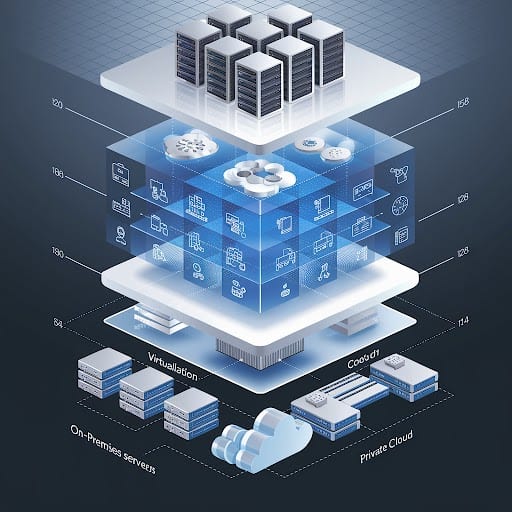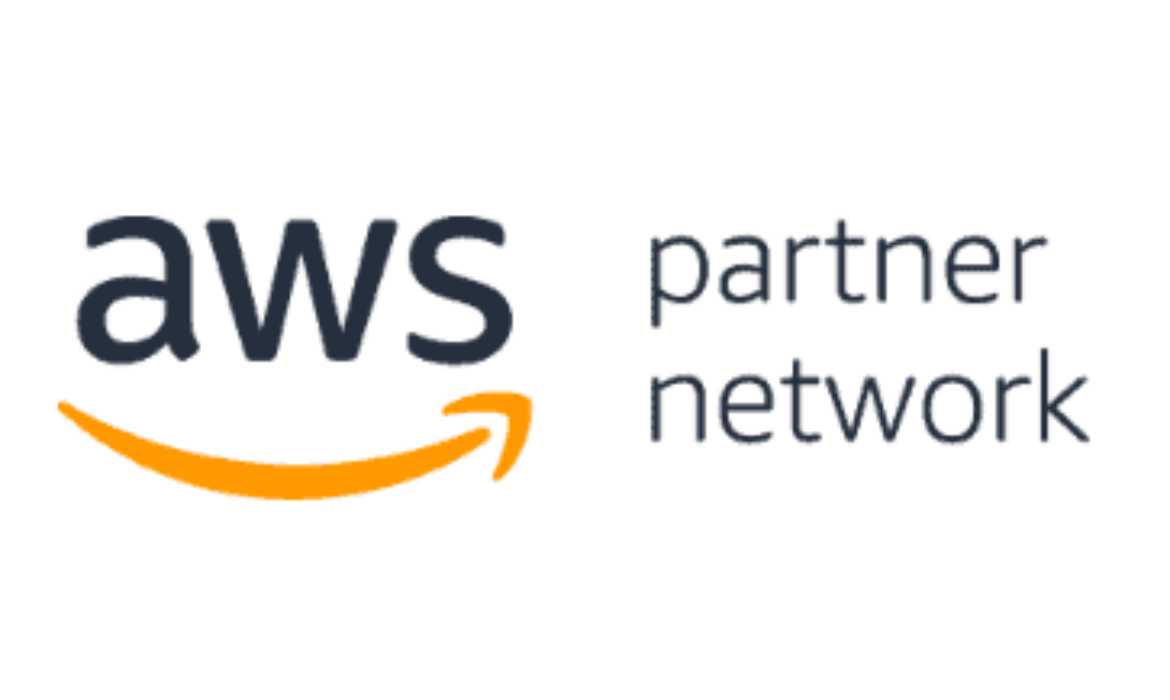AI-Driven Data Analytics: Transforming Politics and Securing Elections
Artificial intelligence is transforming the political landscape, driving more sophisticated campaigns and enhancing election security. With the capabilities of AI-driven data analytics, political teams can now sift through massive datasets to identify trends, understand voter behavior, and create targeted messaging that truly resonates with voters. This ability to adapt in real-time ensures that campaigns remain relevant and impactful, tailoring their approaches to the ever-changing political environment.
Beyond shaping campaign strategies, AI also plays a crucial role in safeguarding election integrity. By detecting anomalies in voter data and identifying potential fraud, AI helps maintain the transparency and security of the electoral process. As concerns about election security and transparency continue to grow, AI becomes an indispensable tool in protecting the democratic process and ensuring fair and credible elections.
AI-Enhanced Voter Behavior Insights: Data-Driven Political Decisions
Imagine a world where political messages seem to speak directly to interests and concerns—that’s the transformative power of AI-driven analytics in action. Voters are experiencing a new level of engagement and relevance in political content, thanks to advanced AI tools like Crimson Hexagon and PoliMonitor that analyze vast datasets, including voting history, social media activity, and demographic information. These AI systems offer campaigns deep insights into voter preferences, enabling them to craft highly personalized messages that resonate on an individual level.
This tailored approach means that voters receive content that truly addresses their specific needs and concerns, rather than generic, one-size-fits-all messaging. Additionally, AI’s ability to predict and track changes in voter sentiment in real-time allows campaigns to adjust their strategies dynamically. This responsiveness ensures that political communication remains timely and effective, adapting to shifting attitudes and emerging issues. As AI technology continues to advance, its impact on political messaging is set to deepen, making interactions with campaigns more relevant and engaging, and ensuring that voters are better informed and more connected to the issues that matter most to them.
Detecting and Preventing Election Fraud with AI Algorithms
AI algorithms are revolutionizing the way election fraud is detected, ensuring greater transparency in democratic processes. By analyzing large datasets, AI can swiftly identify irregularities such as duplicate registrations and unusual voting patterns, significantly reducing the potential for human error. Governments are increasingly adopting these technologies to safeguard election integrity, making AI an essential tool in fraud prevention.
Moreover, AI goes beyond mere detection by utilizing predictive analytics to anticipate potential risks and monitoring social media to combat misinformation. As elections become more digitized, AI’s role in maintaining security and fairness is becoming increasingly critical. This underscores the importance of AI for government agencies tasked with election security, as it helps protect against cyber threats and ensures the integrity of election data and processes.
Predictive Analytics: Shaping Campaign Strategies and Election Outcomes
Predictive analytics is transforming campaign strategies and election outcomes by harnessing AI to analyze voter data and trends. By examining information from social media, voting history, and demographics, AI enables campaigns to forecast voter behavior with remarkable accuracy. This capability allows political teams to craft highly targeted messages and strategies tailored to specific voter segments, optimizing their outreach and engagement efforts.
Additionally, AI-powered predictive analytics enhances campaign efficiency by facilitating real-time adjustments. It helps campaigns anticipate shifts in voter sentiment and opponent strategies, enabling better resource allocation and more effective voter engagement. As AI technology continues to advance, its influence on shaping election strategies and outcomes is expected to grow, offering deeper insights and more precise tools for both political analysts and campaign teams.
Social Media Sentiment Analysis: AI’s Role in Political Messaging
AI-driven social media sentiment analysis is transforming political analysis by offering deep insights into voter behavior and election trends. For political analysts, AI tools provide real-time data on public sentiment, enabling more accurate predictions and strategic advice. This enhanced analysis helps campaigns refine their messaging and engage more effectively with voters.
For voters, AI ensures that political content is relevant and engaging, improving the quality of information and interaction. Additionally, government agencies use AI to protect election integrity and combat cyber threats, making elections more secure. As AI technology advances, its impact on political messaging and election security continues to grow.
AI in Election Auditing: Enhancing Transparency and Security
AI in Election Auditing is revolutionizing the way election committees ensure transparency and security. By utilizing advanced AI tools, these committees can efficiently monitor and audit election processes, quickly identifying irregularities and potential fraud. This technology enhances transparency by detecting discrepancies and maintaining trust in the electoral system.
Political analysts also gain from AI, using it to delve deeper into voter behavior, election trends, and public sentiment. AI provides critical insights that improve predictions and strategic advice, leading to more informed and effective election strategies. As AI continues to advance, its impact on both auditing and analyzing elections is becoming increasingly vital for ensuring a secure and transparent democratic process.
Ethical Challenges and the Future of AI in Politics and Election Security
As AI advances in politics and election security, it presents both significant benefits and ethical dilemmas. While AI enhances voter targeting, sentiment analysis, and election integrity, it also raises concerns about privacy, data manipulation, and misuse. These issues underscore the need for strict ethical guidelines to protect voter information and ensure fair practices.
The future of AI in politics will depend on addressing these ethical challenges while leveraging its potential. Ensuring transparency, data protection, and clear regulations will be key to maintaining trust and fairness in elections. Balancing innovation with ethical considerations is essential for upholding democratic values as AI technologies continue to evolve.
Hybrid Cloud Revolution: A Modern IT Infrastructure Solution
Hybrid cloud combines on-premises infrastructure with public cloud services, like AWS, to create a flexible, scalable IT environment. It allows businesses to run workloads locally and in the cloud, optimizing performance, security, and compliance. This architecture offers the agility to manage data where it’s most efficient, balancing the benefits of cloud innovation with the control of in-house systems.
With AWS hybrid cloud solutions such as AWS Outposts and AWS Direct Connect, businesses can seamlessly integrate their existing infrastructure with the cloud. This enables efficient scaling, low-latency connections, and adherence to regulatory standards, providing the best of both on-premises and cloud environments.
Why do businesses implement a hybrid cloud?
Businesses adopt hybrid cloud solutions to integrate their on-premises infrastructure with cloud services like AWS, enhancing control and flexibility. This approach allows for smoother migration and modernization by combining existing IT systems with AWS’s scalability and cost-efficiency. Companies can keep sensitive workloads on-premises while utilizing AWS for its powerful tools and resources, which help meet low-latency needs, process data locally, and comply with regulations.
AWS plays a crucial role in hybrid cloud strategies by offering scalable resources that can adjust to varying demands, reducing hardware investments and operational costs. Additionally, hybrid cloud setups ensure business continuity by enabling workload shifts between on-premises and cloud environments, minimizing disruptions during maintenance or failures. This blend of local and cloud resources helps businesses maintain a resilient and adaptable IT infrastructure.
Key Benefits of Hybrid Cloud for Modern Businesses
Hybrid cloud infrastructure provides modern businesses with a powerful blend of on-premises and cloud solutions, leveraging the best of both worlds to enhance operational efficiency and flexibility. One of the primary advantages of a hybrid cloud is increased scalability. By integrating AWS cloud services with existing on-premises resources, companies can dynamically scale their compute and storage capabilities based on demand. This elasticity ensures that businesses can handle varying workloads efficiently without over-provisioning resources, thereby optimizing costs and performance.
Another significant benefit is improved agility in development and deployment. With a hybrid cloud setup, businesses can leverage AWS’s extensive suite of services to accelerate application development, testing, and deployment. This approach allows for rapid experimentation and innovation, as developers can utilize AWS’s scalable infrastructure to test new ideas and roll out solutions faster than traditional setups. The ability to seamlessly integrate and manage these services across environments further supports continuous integration and delivery practices.
Hybrid cloud solutions also bolster business continuity and resilience. In scenarios where on-premises systems are undergoing maintenance or facing issues, AWS’s public cloud can take over, ensuring minimal disruption to operations. This capability is crucial for maintaining high availability and reducing downtime, which directly impacts customer satisfaction and operational efficiency.
Lastly, hybrid cloud environments enhance compliance and data security. By using AWS’s secure cloud services in conjunction with local data centers, businesses can ensure that sensitive data is stored and managed according to regulatory requirements. This hybrid approach provides greater control over data residency and security policies, helping businesses meet stringent compliance standards while taking advantage of cloud innovation.

Hybrid Cloud with AWS: A Strategic Approach to Modern IT Infrastructure
In today’s rapidly evolving digital landscape, many organizations are turning to hybrid cloud solutions to achieve greater flexibility and scalability. AWS, with its comprehensive suite of cloud services, stands out as a leader in this space. The hybrid cloud strategy offered by AWS allows businesses to seamlessly integrate on-premises infrastructure with AWS’s robust cloud environment. This approach enables organizations to leverage the scalability and cost-efficiency of AWS while maintaining control over sensitive data and legacy systems on-premises. Key AWS services like AWS Direct Connect and AWS Storage Gateway facilitate this seamless integration, ensuring a smooth and secure connection between local data centers and the cloud.
AWS’s hybrid cloud strategy is designed to address the diverse needs of businesses looking to optimize their IT operations. By utilizing services such as Amazon EC2, which provides scalable compute capacity, and Amazon S3, which offers secure and scalable storage, companies can build a hybrid environment that supports a wide range of applications and workloads. This strategic blend of on-premises and cloud resources allows organizations to achieve enhanced performance, agility, and cost-effectiveness. As businesses continue to navigate the complexities of modern IT infrastructure, AWS’s hybrid cloud solutions offer a compelling path forward, combining the best of both worlds to drive innovation and operational excellence.
Building a Hybrid Cloud Strategy for Future Growth
In today’s rapidly evolving technological landscape, adopting a hybrid cloud strategy is becoming increasingly crucial for businesses aiming to scale and innovate. A hybrid cloud environment, which integrates both on-premises infrastructure and public cloud services, offers unparalleled flexibility and agility. By leveraging platforms like AWS, organizations can seamlessly manage workloads across different environments, ensuring optimal performance and cost-efficiency. AWS’s extensive suite of cloud services, including AWS Lambda and Amazon EC2, provides businesses with the tools they need to dynamically allocate resources and adapt to changing demands.
Implementing a hybrid cloud strategy with AWS not only enhances operational efficiency but also fortifies data security and compliance. AWS’s robust security features, such as AWS Shield and AWS Key Management Service (KMS), ensure that sensitive information is safeguarded across both on-premises and cloud environments. Furthermore, the integration of AWS’s cloud-native tools with existing on-premises infrastructure enables organizations to harness the full potential of cloud computing while maintaining control over their data and applications. This strategic approach to cloud adoption empowers businesses to future-proof their IT infrastructure, drive innovation, and support sustained growth in an increasingly competitive market.
Being an AWS Select Partner offers a range of advantages for organizations focusing on hybrid cloud solutions. This partnership provides exclusive access to advanced training and technical support, ensuring that partners are well-equipped to implement and optimize AWS hybrid cloud strategies. AWS Select Partners also benefit from the AWS Partner Network (APN) Portal, which includes specialized tools and resources to enhance their hybrid cloud offerings. Moreover, the partnership opens doors to co-marketing opportunities and collaborative go-to-market initiatives, empowering partners to showcase their expertise and expand their reach in delivering innovative hybrid cloud solutions with AWS.
Digital Twins and IoT: Powering Smart Innovations
Imagine a bustling city where technology weaves an invisible web, responding to every citizen’s need with effortless precision. Traffic lights adjust intuitively, easing congestion before it forms. Energy grids anticipate demand spikes, seamlessly balancing supply to prevent outages. Public transport flows smoothly, routes adjusting in real-time to optimize commuter journeys. How is this possible? Meet the digital twins—virtual replicas of our physical world, meticulously crafted to mirror every detail.
Yet, these twins are not mere mirrors. They’re evolving with the help of Generative AI, transforming from static copies into dynamic problem-solvers. In high-tech factories, they predict machinery issues before they disrupt production, suggesting improvements that boost efficiency day by day. Across sprawling logistics networks, they forecast traffic and weather, guiding shipments to their destinations swiftly and on schedule.
This isn’t just progress; it’s a revolution. As Generative AI and digital twins integrate deeper into our lives, from city planning to healthcare, they’re reshaping industries with unprecedented innovation and operational prowess.
Integrating Generative AI with Digital Twins
Understanding the dynamics of IoT involves recognizing how integrating Generative AI with Digital Twins marks a profound transformation. Traditionally adept at real-time monitoring and simulation of physical assets or processes, Digital Twins now evolve into proactive decision-makers with the infusion of Generative AI.
Generative AI enhances Digital Twins by predicting behaviors and optimizing operations through comprehensive analysis of IoT-generated data. Imagine a manufacturing facility where Generative AI-powered Digital Twins not only replicate production lines but also predict maintenance needs and suggest process improvements autonomously. This collaboration significantly boosts operational efficiency by preemptively addressing challenges and optimizing resource usage.
This evolution represents more than just technical advancement; it marks a paradigm shift in how industries harness IoT capabilities. By leveraging Generative AI-enhanced Digital Twins, businesses can achieve unprecedented levels of efficiency and innovation. This advancement promises smarter, more adaptable systems within the IoT landscape, paving the way for transformative breakthroughs across diverse sectors.
Digital Twins in Action: Optimizing IoT Operations
Digital Twins are essential in IoT for enhancing operational efficiency across industries by replicating physical assets and systems, enabling real-time data simulation and insights. For example, in smart cities, Digital Twins adjust traffic flow using live IoT sensor data, optimizing urban mobility. In healthcare, they use predictive analytics to simulate patient scenarios, improving treatment and equipment maintenance. This proactive use minimizes downtime and maximizes resource efficiency, reducing costs and enhancing operations.
As IoT evolves and Digital Twins become more advanced, industries stand to benefit from significant innovations in efficiency and productivity. These integrated technologies promise transformative impacts, driving operational excellence across diverse sectors and paving the way for future advancements in IoT-driven solutions.
Smart Cities: Harmony Through Digital Twins
In the context of smart cities, digital twins revolutionize urban management by acting as virtual replicas of the city’s physical infrastructure. These digital counterparts meticulously simulate and monitor various aspects such as traffic patterns, energy usage, and public services like transportation. Powered by real-time data streamed from IoT sensors embedded throughout the city, digital twins facilitate agile decision-making and operational optimizations. For example, they can dynamically adjust traffic signal timings to alleviate congestion or reroute energy distribution to minimize waste. This proactive approach not only enhances urban efficiency and resource utilization but also improves the overall quality of life for residents. By integrating digital twins into urban planning and management, smart cities pave the way for sustainable growth and innovation, setting new standards for urban development in the digital age.
Predictive Insights: Leveraging Digital Twins in IoT Environments
In the world of IoT, Digital Twins emerge as powerful tools for predictive analytics, revolutionizing how industries optimize operations. These virtual counterparts of physical assets or processes continuously collect and analyze real-time data from IoT sensors. By harnessing this data, Digital Twins simulate various scenarios, predict future behaviors, and recommend proactive measures to enhance efficiency and performance.
Imagine a manufacturing plant where Digital Twins anticipate machinery failures before they occur, allowing for preemptive maintenance and minimizing production disruptions. In urban planning, Digital Twins can forecast traffic patterns based on historical and current data, facilitating better city management strategies. This predictive capability not only optimizes resource allocation but also fosters smarter decision-making across sectors, driving continuous improvement and innovation in IoT-enabled environments.
Applications of Digital Twins in IoT
Digital Twins are spearheading a transformative wave across industries within the IoT ecosystem. These virtual replicas of physical entities enable businesses to simulate real-world scenarios and optimize operations with unprecedented precision. In manufacturing, Digital Twins facilitate predictive maintenance, foreseeing equipment failures and optimizing production schedules to minimize downtime.
Moreover, in healthcare, Digital Twins simulate patient conditions to personalize treatment plans and predict health outcomes. Beyond these applications, Digital Twins are reshaping urban planning by modeling infrastructure performance and traffic flow, leading to more efficient city designs and management strategies. By leveraging Digital Twins, industries can achieve higher operational efficiency, reduced costs, and enhanced innovation, setting new benchmarks for performance and sustainability in the IoT era.
Implementing AI-driven Digital Twins in IoT
Implementing AI-driven Digital Twins in IoT environments presents both challenges and promising solutions. One major hurdle is the complexity of integrating diverse data streams from IoT devices into cohesive digital replicas. Ensuring seamless synchronization and real-time data processing is crucial for accurate predictive modeling and decision-making.
Moreover, maintaining data security and privacy while managing large volumes of sensitive information remains a critical concern. Solutions to these challenges include leveraging advanced AI algorithms for data fusion and anomaly detection, enhancing system interoperability through standardized protocols, and implementing robust cybersecurity measures to safeguard data integrity.
Successfully navigating these challenges enables businesses to harness the full potential of AI-driven Digital Twins. They empower organizations to achieve operational efficiencies, predictive insights, and innovation across sectors, shaping the future of IoT applications with intelligent and responsive systems.
IoT is undeniably the backbone of digital twins, forming the essential foundation upon which these advanced systems are built. Through the vast network of interconnected devices, IoT provides the real-time data necessary for creating accurate and dynamic digital replicas. This continuous data flow is crucial for the functionality of digital twins, as it allows for constant monitoring and updating of physical assets.
Advanced data analytics and AI utilize this data to generate actionable insights and predictive maintenance strategies. Cloud computing ensures seamless storage and processing of vast amounts of data, enabling real-time decision-making. By recognizing IoT as the core component, we acknowledge its pivotal role in harmonizing various technologies. This integration empowers digital twins to drive efficiency, innovation, and transformation across multiple industries. Thus, IoT stands as the cornerstone, unlocking the full potential of digital twin technology.
Top 5 Strategies AWS Partners Use to Leverage AWS Infrastructure for Generative AI
Discover the transformative power of AWS in scaling generative AI. From groundbreaking networking advancements to revolutionary data center strategies, AWS is continuously enhancing its infrastructure. These innovations not only bolster the capability but also redefine the scalability of generative AI solutions. Embrace a future where AWS sets the benchmark in cloud-based technologies, empowering businesses to harness the full potential of artificial intelligence at unprecedented scales.
Generative artificial intelligence (AI) has rapidly revolutionized our world, enabling both individuals and enterprises to enhance decision-making, transform customer experiences, and foster creativity and innovation. However, the robust infrastructure supporting this powerful technology is the culmination of years of innovation. This sophisticated foundation allows generative AI to thrive, demonstrating that behind every breakthrough is a history of dedicated advancement and development. In this blog, we’ll explore the top five strategies AWS partners use to maximize AWS infrastructure for generative AI, explained in a way that anyone can understand.
1. Harnessing Low-Latency, High-Performance Networking
Generative AI models rely on massive amounts of data to learn and generate accurate predictions. Efficiently managing and processing this data requires advanced networking technologies that facilitate fast and reliable data movement across the cloud infrastructure. AWS partners leverage these specialized networking solutions to optimize performance and enhance the capabilities of their generative AI applications.
Elastic Fabric Adapter (EFA): EFA acts as a super-fast highway for data, enabling rapid data transfer by bypassing traditional network bottlenecks. When training generative AI models, which often involves processing large datasets and requiring frequent communication between multiple servers, EFA ensures data reaches its destination swiftly. This accelerated data movement is crucial for training complex AI models efficiently.
Scalable Reliable Datagram (SRD): SRD functions like a high-speed courier service for data packets, ensuring quick and reliable delivery. Working in tandem with EFA, SRD guarantees that data packets are not only transferred rapidly but also consistently, which is vital for maintaining the accuracy and performance of AI models. This combination of speed and reliability is essential for efficient model training and inference.
UltraCluster Networks: Imagine a vast network of interconnected supercomputers, each linked by ultra-fast and dependable cables. UltraCluster Networks are designed to support thousands of high-performance GPUs (graphics processing units), providing the computational power needed for training large-scale generative AI models. These networks offer ultra-low latency, meaning there is minimal delay in data transfer, significantly accelerating the training process and enabling faster model iterations.
2. Enhancing Energy Efficiency in Data Centers
Operating AI models demands substantial electrical power, which can be costly and environmentally impactful. AWS partners leverage AWS’s advanced data centers to boost energy efficiency and reduce their environmental footprint.
Innovative Cooling Solutions: Data centers house thousands of servers that generate considerable heat during operation. AWS employs advanced air and liquid cooling technologies to efficiently regulate server temperatures. Liquid cooling, resembling a car’s radiator system, effectively manages heat from high-power components, significantly lowering overall energy consumption.
Environmentally Responsible Construction: AWS prioritizes sustainability by constructing data centers with eco-friendly materials such as low-carbon concrete and steel. These materials not only diminish environmental impact during construction but also throughout the data centers’ operational life. This commitment helps AWS partners in cutting down carbon emissions and promoting environmental responsibility.
Simulation and Optimization: Prior to constructing a new data center, AWS conducts detailed computer simulations to predict and optimize its performance. This simulation-driven approach enables AWS to strategically place servers and cooling systems, maximizing operational efficiency. Similar to planning a building’s layout in a virtual environment, this ensures minimal energy usage and operational costs while maintaining optimal performance.
3. Ensuring Robust Security
Security is paramount for AWS partners, particularly when handling sensitive data essential for generative AI models. AWS implements a suite of advanced security measures to protect data and ensure compliance with stringent regulations.
AWS Nitro System: Serving as a vigilant guardian, the AWS Nitro System enforces rigorous isolation between customer workloads and AWS infrastructure. It features secure boot capabilities that prevent unauthorized software from executing on servers, thereby maintaining data integrity and confidentiality.
Nitro Enclaves: Within servers, Nitro Enclaves establish secure, isolated environments. Integrated with AWS Key Management Service (KMS), they encrypt data during processing to create a secure enclave for sensitive information, analogous to a digital safe, shielding it from exposure.
End-to-End Encryption: AWS employs robust encryption methods to secure data both at rest and in transit across its infrastructure. This comprehensive approach ensures data remains protected with stringent access controls, bolstering security against unauthorized access.
Compliance and Certifications: AWS adheres strictly to global security standards and holds numerous certifications, underscoring its commitment to data protection and regulatory compliance. These certifications reassure customers of AWS’s capability to safeguard their data with the highest security measures in place.
4. Harnessing Specialized AI Chips
Efficient operation of AI models relies heavily on specialized hardware. AWS partners harness purpose-built AI chips from AWS to optimize the performance and cost-effectiveness of their generative AI applications.
Strategic Collaborations: AWS collaborates closely with industry leaders such as NVIDIA and Intel to provide a diverse range of accelerators. These collaborations ensure that AWS partners have access to cutting-edge hardware tailored to their specific AI needs.
Continuous Innovation: AWS continues to lead in AI hardware development. For example, the upcoming Trainium2 chip promises even faster training speeds and improved energy efficiency. This ongoing innovation enables AWS partners to maintain a competitive advantage in the dynamic field of AI.
5. Enhancing Scalability in AI Infrastructure
Scalability is crucial for the success of generative AI applications, which often face unpredictable computing demands. AWS provides a versatile and resilient infrastructure that empowers partners to dynamically adjust resources to meet evolving requirements.
Auto Scaling: AWS’s Auto Scaling feature automatically adjusts computing resources based on application demand. When an AI workload requires more processing power, Auto Scaling efficiently adds servers to maintain optimal performance. This capability ensures consistent application responsiveness and efficiency, supporting uninterrupted operations.
Elastic Load Balancing (ELB): ELB evenly distributes incoming traffic across multiple servers to prevent any single server from becoming overwhelmed. By intelligently distributing workloads, ELB optimizes resource allocation, enhancing the overall performance and reliability of AI applications. This ensures seamless operation even during periods of peak usage.
Amazon S3 (Simple Storage Service): S3 offers scalable storage solutions for securely storing and retrieving large volumes of data as needed. Acting as a flexible digital repository, S3 effectively manages diverse data requirements, seamlessly supporting the storage and retrieval needs of AI applications.
Amazon EC2 (Elastic Compute Cloud): EC2 provides resizable compute capacity in the cloud, enabling partners to deploy and scale virtual servers rapidly in response to fluctuating workload demands. This flexibility is crucial for iterative model testing, experimentation, and efficient scaling of production environments, facilitating agile development and deployment of AI applications.
Conclusion
AWS Partner Companies are leveraging AWS’s advanced infrastructure to push the boundaries of what’s possible with generative AI. By utilizing low-latency networking, enhancing energy efficiency, ensuring robust security, leveraging specialized AI chips, and implementing scalable infrastructure, they can deliver high-performance, cost-effective, and secure AI solutions. These strategies not only help in achieving technological advancements but also ensure that AI applications are sustainable and accessible to a wide range of industries. As generative AI continues to evolve, AWS and its partners will remain at the forefront, driving innovation and transforming how we interact with technology.
AWS Solutions for Healthcare Data Migration Challenges
No industry is without its challenges, and the healthcare sector is no exception, particularly when it comes to using cloud services for data migration. In depth of discussing the
What is healthcare data migration?
Healthcare data migration involves transferring extensive volumes of medical records, patient information, and various health-related data from one system to another. This complex process is vital for healthcare organizations transitioning to more advanced information systems, consolidating data from diverse sources, or adopting cloud-based solutions. As healthcare systems evolve, the ability to manage and transfer data efficiently becomes crucial. Migration ensures that all historical and current patient data are preserved and remain accessible in new systems, which is critical for delivering continuous and quality care. It also addresses the need to consolidate disparate data sources into a unified platform, simplifying data management, and improving the overall efficiency of healthcare operations.
Why is it needed?
The need for data migration in healthcare stems from several key objectives. First and foremost, it aims to enhance patient care by ensuring healthcare providers have immediate and comprehensive access to patient histories, enabling informed decision-making. Additionally, it facilitates the adoption of advanced data analytics tools, which can uncover insights for better clinical outcomes and operational efficiencies.
Data migration is also crucial for meeting regulatory requirements, such as data privacy laws and standards, ensuring compliance and protecting patient information. Effective data migration supports interoperability, allowing different healthcare systems and applications to work together seamlessly. This reduces the risk of data loss during transitions and helps healthcare organizations keep pace with technological advancements and evolving industry standards, ultimately leading to more resilient and adaptable healthcare infrastructures.
Navigating Data Migration Phases: An In-Depth Guide
Planning and Assessment
The initial phase of planning and assessment is crucial for comprehensively identifying all pertinent data sources, thereby grasping the migration scope. Clear migration objectives are set to establish precise goals, while estimating downtimes aids in mitigating operational disruptions. Moreover, selecting appropriate migration mediums and delineating project timelines ensures a structured and orderly approach to the migration process, thereby facilitating a seamless transition.
Data Profiling and Cleansing
In the data profiling and cleansing phase, a meticulous examination of data is undertaken to evaluate its format and quality thoroughly. It involves identifying and rectifying duplicate, corrupted, or inconsistent data to uphold data integrity. This step is fundamental to ensuring the accuracy and dependability of migrated data in the new system, effectively mitigating the risk of transferring flawed information.
Data Transformation and Mapping
Data transformation and mapping involve adapting data formats to align with the requirements of the target system. Guaranteeing compatibility and consistency between source and target databases is essential for seamless data integration. Additionally, remapping the data structure to correspond with the target database schema contributes to maintaining data integrity throughout the migration process.
Data Migration Execution:
Following the completion of planning and preformatting, the actual data migration and synchronization commence. This phase encompasses transferring data from the source to the target system while minimizing disruptions to ongoing operations. Continuous monitoring and validation play a pivotal role in promptly identifying and resolving any issues or errors, thereby ensuring a successful transition to the new system with precise and readily accessible data.
Challenges facing while migrating the data and their solutions
Meeting Compliance Standards
The introduction of new technologies in the healthcare sector presents a significant hurdle in adhering to data privacy regulations such as HIPAA. Compliance with these regulations is especially challenging during migrations due to the transfer of protected health information (PHI).
Ensuring compliance entails securely transferring data via encryption and vendor compliance assurance. This involves encrypting the data entirely and verifying that the database vendor meets HIPAA compliance standards. Furthermore, it’s crucial to monitor user access to the data by implementing logging measures that capture all user interactions.
Risk of Data Breaches
Data breaches pose a critical concern during healthcare data migration on AWS due to the sensitive nature of healthcare data. Cyber attackers are attracted to this valuable information, aiming for financial gain or malicious intent. To safeguard patient information throughout the migration process, implementing security protocols like encryption and continuous monitoring is essential, reducing the risk of compromising patient privacy.
Furthermore, comprehensive data breach response plans are vital for healthcare data migration on AWS. Despite preventive measures, breaches may occur, requiring effective response mechanisms. Well-defined response plans enable organizations to promptly mitigate the impact of breaches, minimizing potential damage to operations. Proactive management of data breach risks enhances security and ensures the protection of patient data during migration on AWS.
Data Interoperability
Achieving seamless data interoperability between various healthcare systems and applications poses a significant challenge during AWS data migration. The presence of disparate data formats, structures, and standards complicates the integration and exchange of data, necessitating meticulous data mapping and standardization efforts. These complexities can impede the smooth transition of information between systems, hindering efficient healthcare operations and patient care delivery.
To address these challenges, the adoption of interoperability standards such as HL7 plays a pivotal role in facilitating seamless communication and interoperability among systems. By adhering to established standards, healthcare organizations can streamline data exchange processes and enhance the compatibility of disparate systems. Leveraging HL7 and similar standards ensures that data can be accurately interpreted and exchanged, promoting efficient collaboration and information sharing across the healthcare ecosystem.
Cost Optimization
Cost optimization is a major challenge in healthcare data migration on AWS due to the significant expenses linked to transferring large data volumes. Achieving cost efficiency demands meticulous planning and strategy optimization. Healthcare organizations can ease the financial burden by adopting best practices and utilizing AWS cost management tools. These tools enable efficient resource monitoring, identification of cost-saving opportunities, and implementation of budget-friendly solutions.
Employing strategies like data compression and AWS Storage Gateway can minimize expenses during migration. Furthermore, optimizing the selection of AWS storage services based on data usage patterns can further cut costs. Leveraging AWS’s scalable infrastructure allows healthcare organizations to streamline migration processes and meet their cost optimization goals effectively.
Planned Downtime
Minimizing planned downtime in healthcare data migration is vital for uninterrupted access to patient information. Careful planning and scheduling of migration activities are essential to avoid disruptions to clinical workflows. Healthcare organizations can strategically schedule tasks during low-traffic periods to minimize operational impact. Implementing failover mechanisms and redundancy measures ensures service availability during migration. These strategies collectively enable healthcare providers to access patient data seamlessly, safeguarding continuity of care.
Data replication ensures real-time data syncing between systems, facilitating seamless failover during migration. Phased migration breaks down the process into manageable stages, maintaining service continuity. Combining these strategies with meticulous planning minimizes planned downtime in healthcare data migration. Thus, uninterrupted access to patient information and healthcare services is upheld efficiently.
Data Analysis
Effective data analysis is vital for extracting valuable insights from healthcare data migrated to AWS. Robust analytics capabilities empower healthcare organizations to improve patient outcomes and optimize healthcare delivery. Leveraging AWS analytics services like Amazon Redshift and Amazon QuickSight enables efficient analysis of large data volumes, facilitating informed decision-making to enhance patient care.
By utilizing these advanced tools, healthcare organizations can uncover trends, patterns, and correlations within their data, facilitating targeted interventions and personalized treatment plans. AWS analytics services provide scalability and flexibility, allowing organizations to manage growing data volumes and adapt to changing healthcare demands seamlessly.
In a nutshell, migrating healthcare data onto AWS comes with its fair share of hurdles, spanning regulatory compliance, security concerns, and cost management. Nevertheless, through thorough planning, stringent security protocols, adherence to industry standards, and tapping into AWS’s analytics tools, healthcare institutions can navigate these obstacles successfully. By carefully strategizing, following established guidelines, and making the most of AWS offerings, the transition of healthcare data can lead to improved patient services, streamlined operations, and adaptability in the dynamic healthcare sector.
Cloud Automation’s Latest Innovations: AI & ML Empowerment
Cloud automation is the application of tools and processes to streamline tasks and workflows within cloud computing environments, spanning resource provisioning, performance monitoring, and cost optimization. In the contemporary cloud landscape, businesses are experiencing a surge of innovation reshaping how they leverage digital infrastructure. Hybrid cloud solutions merge private and public cloud environments, offering unparalleled adaptability and scalability. Automated cloud orchestration enhances operational efficiency through dynamic resource allocation. AI technologies drive intelligent decision-making and predictive analytics, while serverless automation simplifies infrastructure management, empowering developers to focus solely on code deployment and scalability. These advancements represent the cutting edge of cloud innovation, empowering businesses with enhanced agility, performance, and transformative capabilities across industries.
Mechanism of Cloud Automation and Coverage of Task Workflows
Cloud automation involves a blend of tools, processes, and scripts aimed at streamlining tasks and workflows within cloud computing environments. It starts by identifying repetitive or error-prone tasks like resource provisioning, performance monitoring, and cost optimization. Automation tools then apply predefined rules and policies to execute these tasks, reducing manual intervention. This often entails using scripting languages or configuration management tools to act upon predefined triggers. Additionally, cloud automation relies on APIs from cloud service providers to manage resources programmatically. By automating routine tasks, cloud automation enhances efficiency, cuts operational costs, and mitigates errors, allowing businesses to focus on strategic initiatives.
The Coverage of Tasks and Workflows encompasses resource provisioning, where tools dynamically allocate resources for optimal performance and scalability. Performance monitoring ensures system metrics are continuously tracked for peak performance. Cost optimization automates resource management to maximize efficiency while minimizing expenses. Workflow orchestration automates complex processes, enhancing operational efficiency and reducing manual intervention. Overall, cloud automation offers businesses greater efficiency, agility, and cost-effectiveness in their cloud operations.
Why do businesses leverage automation tools in this context?
Businesses leverage automation tools in cloud computing to streamline operations and enhance efficiency. These tools enable the dynamic allocation of resources, adjusting computing power and storage based on demand. This scalability optimizes performance and helps manage costs by eliminating manual intervention in resource provisioning. Additionally, automation improves reliability through continuous monitoring and self-healing mechanisms, addressing issues preemptively. By automating tasks like provisioning and monitoring, businesses maintain a resilient cloud infrastructure with minimal effort and reduced errors.
Moreover, automation accelerates application deployment, enabling rapid responses to market demands. Automated deployment pipelines ensure frequent and predictable software releases, fostering agility and innovation. By freeing human resources from maintenance tasks, automation empowers teams to focus on strategic initiatives, such as innovation and customer experiences. Thus, cloud automation drives efficiency, cost savings, agility, and innovation, positioning businesses for success in the digital landscape.
Latest Updates are listed below
- AutoML Advancements: Significant enhancements in AutoML tools have simplified the deployment of AI solutions, automating tasks like model selection, hyperparameter tuning, and feature engineering. This reduces the need for deep data science expertise, allowing businesses to expedite AI model development and deployment, thus accelerating time-to-value. Additionally, democratized access to advanced analytics capabilities enables organizations of all sizes to leverage AI for informed decision-making and innovation.
- Real time Cloud Infrastructure: The demand for real-time cloud infrastructure escalates, propelled by the imperative need for instantaneous data processing and analytics across industries like finance, healthcare, and e-commerce. Real-time cloud infrastructure empowers organizations to extract actionable insights as events occur, owing to its minimal latency and rapid data processing capabilities. This trend finds particular resonance in critical applications such as fraud detection, IoT device monitoring, and personalized user experiences. By harnessing the power of real-time cloud capabilities, businesses can gain a decisive competitive advantage, navigating and thriving in the dynamic terrain of the contemporary digital ecosystem.
- Hybrid and Multi-cloud AI Solutions: Adoption of hybrid and multi-cloud strategies enables businesses to leverage AI solutions across various cloud environments. This approach allows organizations to harness the strengths of different cloud providers while maintaining flexibility and reducing vendor lock-in risks. By deploying AI solutions in hybrid and multi-cloud environments, businesses can scale projects effectively and access a broader range of resources, fostering rapid innovation and competitiveness.
- Artificial Intelligence as a Service: AIaaS emerges as a pivotal force, revolutionizing how businesses harness AI capabilities. Through cloud platforms, companies effortlessly tap into sophisticated AI tools and algorithms, bypassing the need for deep in-house expertise. This accessibility fosters rapid integration of machine learning models into applications, accelerating the deployment of intelligent solutions. AIaaS fuels innovation across diverse domains like natural language processing, computer vision, and predictive analytics, empowering organizations to drive efficiency, enhance customer experiences, and unlock new opportunities in the evolving digital landscape.
- Data As A Service: In the evolving landscape of data management, Data as a Service (DaaS) emerges as a transformative trend addressing the pressing need for streamlined and accessible data utilization. DaaS introduces a framework that revolutionizes how organizations procure and leverage data, offering on-demand access to valuable insights without the logistical burdens of handling large datasets. This shift towards DaaS fosters a culture of data democratization, empowering various departments to make informed decisions based on real-time, relevant data streams. Centralizing data management within the cloud not only simplifies access but also facilitates seamless integration with other cloud services, analytics tools, and machine learning algorithms, thereby elevating the efficiency and effectiveness of data-driven processes across the organization.
These updates reflect the ongoing innovation and maturation of AI, machine learning, and cloud automation technologies, empowering businesses to drive greater efficiency, insights, and value from their data.
Pioneering Advantages in Cloud Automation
Cloud Automation is rapidly evolving, driven by innovative updates that fuel progress in the field. These advancements offer transformative advantages for businesses utilizing cloud technologies. They include:
1. Predictive Resource Scaling
- Ensure Optimal Performance: AI and ML-driven predictive resource scaling anticipate workload fluctuations, guaranteeing optimal performance without manual intervention.
- Cost-Effectiveness: Automatic scaling aligns resource allocation with actual demands, minimizing unnecessary expenses associated with overprovisioning or underutilization.
2. Autonomous Security Response
- Real-Time Threat Mitigation: AI-powered security response swiftly identifies and neutralizes potential threats, ensuring continuous protection of sensitive data.
- Proactive Defense: Automated threat detection preemptively safeguards against cyber attacks, fortifying cloud infrastructure and enhancing data integrity.
3. Intelligent Cost Optimization
- Enhanced Cost Efficiency: AI-driven cost optimization tools identify cost-saving opportunities, enabling businesses to allocate resources more efficiently and reduce unnecessary expenses.
- Strategic Resource Allocation: Analysis of usage patterns facilitates informed decision-making, optimizing cloud spending by identifying and eliminating redundant or underutilized resources.
4. Automated DevOps Pipelines
- Streamlined Software Delivery: Integration of AI and ML automates and refines DevOps processes, accelerating software deployment cycles and ensuring faster time-to-market.
- Improved Quality Assurance: Automated testing and monitoring enhance software quality, enabling businesses to deliver robust and reliable applications to end-users.
In a nutshell, AI and ML-fueled cloud automation heralds a paradigm shift in business operations in the digital epoch. By embracing the latest innovations in cloud automation, enterprises orchestrate streamlined operations, elevate efficiency, and unlock vistas of innovation and expansion. Whether it’s prognosticating resource needs, fortifying security postures, optimizing costs, or expediting software development, cloud automation furnishes the agility, competitiveness, and resilience requisite in the contemporary marketplace. Embrace the transformative potential of cloud automation, propelling your enterprise towards unprecedented heights.
This discourse elucidates the latest trends and advancements in cloud automation, furnishing businesses with invaluable insights into harnessing these technologies to propel business objectives. Laden with real-world illustrations and pragmatic perspectives, this discourse serves as a beacon for enterprises endeavoring to navigate the vanguard of AI-driven cloud automation.
5 Benefits of Working with an AWS Partner Company
AWS Partner Network (APN): Overview and Functionality
The AWS Partner Network (APN) constitutes a worldwide coalition of technology and consulting enterprises, delivering an array of services and solutions centered around Amazon Web Services (AWS). APN partners specialize in various domains including cloud migration, application development, and infrastructure optimization. Through collaboration with APN partners, businesses harness specialized expertise and resources, expediting their adoption of AWS and realizing digital transformation objectives. APN serves as a catalyst for collaboration, innovation, and expansion, linking AWS clients with a global network of reliable partners.
Why work with an AWS Partner?
In business, standing out always grants an additional advantage! Partnering with an AWS Partner Company is essential in today’s business landscape, as the partner company provides specialized expertise in AWS for innovation and competitiveness. These firms dedicate a team that comprehends the unique needs, ensuring seamless communication and effective issue resolution. This collaboration enables a focus on core objectives while skilled professionals manage cloud complexities. Furthermore, AWS Partner Companies provide invaluable guidance on cloud adoption and optimization, fostering innovation and enriching customer value. With support from certified experts dedicated to satisfaction, partnering guarantees sustained growth and success in the digital era.
Benefits of Collaborating with an AWS Partner Company
Teaming up with an AWS partner company provides a host of benefits that greatly enhance business operations and outcomes, as their expertise guides in resolving any issue. Their mission is to simplify and guide. Here’s an overview of these advantages:
Efficient Cloud Transformation: Certified AWS partner companies excel in cloud technology, ensuring smooth transitions to AWS services. Leveraging their expertise, businesses migrate systems and applications seamlessly, minimizing disruptions. With their guidance, they navigate the complexities of cloud transformation, overcoming challenges, and seizing opportunities. This ensures swift transitions, enabling businesses to capitalize effectively on the numerous benefits of AWS services, including scalability, cost-efficiency, and accelerated innovation.
Optimal AWS Utilization: Partner companies utilize their extensive expertise to unleash the complete power of AWS services. Through collaboration, they comprehend the unique requirements of businesses, tailoring solutions to fully exploit AWS capabilities. This alignment ensures enhanced performance, scalability, and operational efficiency for businesses. Optimizing AWS utilization not only maximizes cloud investment value but also provides a competitive advantage in the ever-evolving digital realm. This strategic approach empowers organizations to thrive amidst dynamic technological landscapes.
Timely Issue Resolution: AWS partners offer dedicated support and proactive monitoring, swiftly identifying and resolving issues to minimize downtime and optimize cloud infrastructure and application performance. This proactive approach enhances business continuity and customer satisfaction. With the assistance of an AWS partner, businesses can promptly tackle issues, minimizing disruptions and maximizing productivity. This collaborative approach ensures the seamless operation of cloud environments, empowering businesses to confidently prioritize growth and innovation.
Cost-Effective Guidance: Partner companies play a crucial role in providing businesses with cost-effective guidance for informed cloud decisions. Through collaboration, they identify opportunities for cost savings and efficiency improvements, ensuring alignment with budgetary constraints. Leveraging the specialized expertise of AWS partners, businesses can achieve their goals without sacrificing quality or performance. This consultancy approach empowers businesses to optimize cloud adoption, architecture design, and optimization strategies, resulting in a strong return on investment. Moreover, it facilitates the maintenance of financial prudence and operational excellence through strategic and informed decisions regarding cloud infrastructure and resources.
Partner Proximity for Focus: Close collaboration with an AWS partner grants businesses access to a dedicated team, fostering smooth communication and swift issue resolution. This enables a focus on core competencies and strategic goals. Supported by the expertise of an AWS partner, businesses confidently delegate technical tasks, prioritizing innovation, growth, and customer value. This ensures seamless operation and optimization of their cloud infrastructure, driving sustained success in a rapidly evolving digital landscape.
In a nutshell, collaborating with an AWS partner company empowers businesses to efficiently transform their cloud infrastructure, optimize AWS utilization, resolve issues promptly, receive cost-effective guidance, and benefit from partner proximity for enhanced focus and collaboration. These benefits enable businesses to thrive in their cloud initiatives, driving long-term growth and success in an ever-evolving digital landscape.
CloudTern partnership with AWS
CloudTern, an AWS Partner, offers comprehensive AWS cloud services, including consulting, migration, deployment, database management, security, and managed services. Our seasoned experts collaborate with AWS to cater to diverse clients worldwide, expediting their transition to the cloud with innovation and enterprise infrastructure optimization. Committed to success, CloudTern leverages its profound AWS proficiency to assist organizations at any phase of their cloud data journey, ensuring the realization of business goals and maximizing the benefits of AWS.
Exploring GenAI Applications Across Diverse Industries
Granting a technological edge, GenAI stands out as it furnishes a comprehensive 360-degree approach, a capability beyond the sequential nature of the human brain’s consideration of one possibility at a time. Traversing varied terrains, this narrative explores the transformative capacities of Gen AI, reshaping content creation, problem-solving, and beyond. Embark on a journey across the domains like healthcare, finance, and creativity, delving into the narrative intricacies that paint Gen AI as a pivotal force. Observe as it unravels unparalleled advantages, molding industries worldwide and redefining the core of progress in this era of technological evolution. The narrative invites you to witness firsthand the influence of Gen AI, a dynamic catalyst that propels innovation and fundamentally alters the landscape of diverse industries on a global scale.
Why Gen? Why is everyone curious about it?
Gen, short for generative, has captivated interest due to its revolutionary capabilities in AI (artificial intelligence). It leverages advanced models like GPT-3, GPT-4 to generate content, from text to images, with human-like quality. Gen’s versatility has sparked curiosity across various industries, showcasing potential applications in creative writing, content creation, and even solving complex problems. Its ability to understand and produce contextually relevant outputs sets it apart, fueling the curiosity of researchers, developers, and businesses eager to explore the vast possibilities it offers in reshaping how we interact with and leverage AI.
GenAI is a catalyst?
Gen AI serves as a catalyst for innovation by revolutionizing creative processes and problem-solving. Its generative capabilities, powered by advanced models like GPT-3, GPT-4, enable the creation of diverse content, sparking novel ideas and solutions. From generating imaginative text to crafting unique designs, Gen AI fosters creativity and facilitates rapid prototyping. Its adaptability and potential applications across industries make it a driving force for innovation, inspiring researchers, developers, and businesses to explore new frontiers and redefine the possibilities of artificial intelligence in enhancing productivity and creativity.
Upon deeper exploration of the realm of Gen, it became clear that its applications were boundless, stretching as far as the imagination could reach. Whether in healthcare, finance, manufacturing, or marketing, Gen was rewriting the rules of the game. Let’s delve into the key benefits that Gen brings to AI across diverse industries.
Inputs and Outputs of Business with Gen
In the business landscape, incorporating Gen into AI strategies is like unlocking a treasure trove of opportunities. The essential inputs—data, talent, and strategic vision—serve as the catalysts for innovation. As businesses harness Gen to analyze, predict, and optimize, the tangible outcomes include increased efficiency, improved products and services, and ultimately, satisfied customers. Collaboration and continuous learning stand as foundational pillars supporting sustained success in this journey. Amid the dynamic AI terrain, partnerships with Generative AI experts, investments in employee training, and a commitment to ethical AI practices become imperative. This positive business outlook resonates with optimism and a proactive readiness to embrace the future. With Gen as a strategic ally, businesses are not just adapting to change; they are driving it at its best.
GenAI in Telecommunications
Within the telecommunications industry, Gen AI employs machine learning to identify and protect sensitive customer data. By replacing such data with artificial information, this innovative strategy not only elevates the quality of responses but also ensures a heightened level of confidentiality. This advanced approach showcases Gen AI’s pivotal role in addressing privacy concerns, fostering secure interactions, and contributing to the overall improvement of data protection measures within the dynamic landscape of the telecommunications sector.
Generative AI adoption by telecom companies is a catalyst for operational revolution, innovation stimulation, network optimization, and improved customer experiences. Gen AI’s transformative impact not only safeguards data but also drives advancements in service offerings and operational efficiency. This positions it as a pivotal technology reshaping the telecommunications industry with its profound and adaptive capabilities, signaling a paradigm shift in how companies manage and enhance their services in response to evolving technological landscapes.
GenAI in Healthcare
In the healthcare sector, Gen AI offers transformative advantages by enhancing diagnostic accuracy, accelerating drug discovery, and personalizing treatment plans. Its ability to analyze vast datasets enables more precise disease predictions and tailors therapeutic approaches. Gen AI facilitates natural language processing, improving patient-doctor interactions and automating administrative tasks. Additionally, it aids in generating medical content, fostering continuous education for healthcare professionals. With its generative prowess, Gen AI becomes an invaluable ally, fostering innovation, efficiency, and improved patient outcomes, ultimately revolutionizing the healthcare business by integrating cutting-edge technology into diagnosis, treatment, and overall healthcare management.
GenAI stands as a transformative force in healthcare, utilizing large language models (LLMs) and deep learning algorithms to empower providers. Its innovative approach assures significant strides in diagnostic accuracy, efficiently identifying medical conditions. The tool streamlines record-keeping, enhancing data management for streamlined operations. GenAI goes beyond, fostering improved patient engagement through personalized care and enhanced communication. Positioned as a pivotal solution, it revolutionizes healthcare practices by harnessing advanced algorithms. The result is a promising pathway to heightened accuracy in diagnostics, more efficient operations, and an elevated standard of patient experiences, marking a paradigm shift in the way healthcare is delivered and experienced.
GenAI in Finance and Banking
Gen has revolutionized the financial sector by leveraging advanced predictive analytics, fundamentally altering the landscape. Through sophisticated algorithms, it enables financial institutions to forecast market trends with unprecedented accuracy, facilitating optimal investment portfolio management. The transformative impact extends to fortifying fraud detection mechanisms, enhancing security for businesses and consumers alike. This breakthrough not only safeguards against potential risks but also establishes a more resilient and trustworthy financial environment. Gen’s role in refining risk management underscores its pivotal contribution to the industry, solidifying its status as a game-changer that goes beyond predictions to actively shape a secure and efficient financial landscape.
Banks equipped with the trifecta of strategy, talent, and technology stand poised for transformative change through GenAI. Recent research by EY-Parthenon indicates that while banks recognize the transformative potential of GenAI, their initial focus lies in prioritizing back-office automation. This strategic approach aligns with leveraging GenAI to enhance operational efficiency and streamline processes, laying the foundation for broader future business model reimagining. As financial institutions strategically deploy GenAI, the landscape of banking operations undergoes a gradual yet impactful evolution, unlocking new possibilities for efficiency, innovation, and long-term business model transformation.
GenAI in Manufacturing
Gen AI is pivotal in manufacturing, employing machine learning to optimize production, predict maintenance, and improve efficiency. Offering predictive quality control, it minimizes defects and ensures product consistency. Gen AI’s adaptive algorithms analyze extensive datasets, aiding in demand forecasting and inventory management. Through autonomous decision-making and process optimization, it streamlines operations, reduces downtime, and enhances productivity. This transformative technology integrates intelligence, fostering innovation and maintaining competitiveness for companies in the swiftly evolving manufacturing landscape.
Also in manufacturing, Gen AI has introduced smart automation, optimizing production processes and enhancing operational efficiency. Quality control reaches new levels of precision, as Gen’s algorithms meticulously identify defects, minimize errors, and maximize output. Yet, it’s essential to recognize that while Generative AI excels in content creation, it may introduce inaccuracies or generate biased and contextually inappropriate content. This poses risks of misinformed marketing decisions and, more critically, potential damage to a brand’s image in the eyes of consumers. Striking a balance between innovation and accuracy is key in leveraging Gen AI for smart automation and quality control in manufacturing.
In every sector, from healthcare and education to finance and manufacturing, Gen has spurred transformative change. Its impact goes beyond efficiency gains, embracing key business objectives like innovation, growth, and customer satisfaction. In today’s data-driven and technologically advanced landscape, incorporating Gen into AI is not just an option; it’s a strategic imperative. Businesses leveraging Gen’s capabilities are positioned to chart the course into a future filled with limitless opportunities, signifying a crucial era of progress and advancement on the horizon.
Vector Databases: The Top 3 Choices
The Vector database is a standout, high-performance, and scalable storage solution designed for real-time management and retrieval of extensive data volumes. It specializes in handling vectors, arrays, and embeddings crucial for machine learning and analytics, with architecture supporting swift indexing and similarity searches—essential for recommendation systems and image recognition. The optimized vector operations and storage capabilities enable the Vector database to excel in managing intricate, high-dimensional data. This strength is evident in three prominent Vector database options: Open Search, Redis, and Zep Db Vector document store, each tailored for diverse domains like AI, finance, and scientific research, providing efficient querying and analysis features. In the blog, we delve into the limitations of traditional keyword matching and filtering, emphasizing the need for enhanced search functionality in handling unstructured data.
Open Search
Amazon’s OpenSearch is a community-backed, open-source suite tailored for search and analytics, providing developers with tools for data ingestion, search, visualization, and analysis. The suite includes a vector database and search engine (OpenSearch), a visualization and user interface component (OpenSearch Dashboards), and a server-side data collector (Data Prepper). OpenSearch is highly extensible through plugins, allowing developers to enhance vector database features for improved search, analytics, observability, security, and machine learning within the suite. This comprehensive solution serves as a robust foundation for applications requiring efficient querying and analysis of vectorized information, spanning various domains.
Key features
- Powerful Search and Analytics: OpenSearch provides a robust search and analytics engine, enabling efficient data ingestion, exploration, and analysis for developers and users.
- Extensibility with Plugins: Users can enhance OpenSearch’s capabilities with a variety of plugins, expanding functionality in areas such as search, analytics, observability, security, and machine learning.
- Comprehensive Suite: OpenSearch encompasses a full suite, including a data store and search engine (OpenSearch), visualization and user interface tools (OpenSearch Dashboards), and a server-side data collector (Data Prepper), offering a comprehensive solution for diverse data management and analytical needs.
Advantage of Open Search as a Vector Database
OpenSearch excels as a vector database for handling unstructured data in various applications. Its flexibility with engines, algorithms, and distance measures makes it adept at crafting generative AI systems, exploring rich media, and refining semantic search. The scalable engine ensures efficient and low-latency vector searches, enabling users to easily navigate and find specific unstructured data. OpenSearch’s capabilities make it invaluable for enhancing user experiences and delivering efficient outcomes in those unstructured data applications.
Redis
Redis Vector database, a high-performance in-memory storage system, is tailored for real-time applications, excelling in swift data retrieval and processing. With efficient indexing and similarity search capabilities, it is ideal for recommendation systems and analytics. Its in-memory architecture ensures rapid access to high-dimensional data, making it versatile for low-latency performance. As an open-source distributed system, Redis Vector database is widely utilized across diverse domains, providing a robust foundation for real-time analysis of vectorized information in various applications.
Key features
- In-Memory Performance: Redis Vector database excels in high-performance, in-memory storage, optimizing vector search by ensuring rapid access and processing of data. This capability is crucial for real-time applications requiring low-latency performance.
- Efficient Indexing and Similarity Search: The database boasts efficient indexing and similarity search capabilities, making it ideal for vector-related tasks such as recommendation systems and analytics. This ensures quick and accurate retrieval of relevant information based on vector similarities.
- Versatility for High-Dimensional Data: Redis Vector database’s in-memory architecture ensures versatile handling of high-dimensional data, making it well-suited for applications that demand efficient vector search across diverse and complex datasets.
Advantage of Redis as a Vector Database
Redis is a leading choice for unstructured data as a premier Vector database, prized for its exceptional in-memory performance. It enables rapid storage and retrieval of vital vectorized data for real-time applications. With adept indexing and similarity search capabilities, Redis excels in unstructured data applications, particularly recommendation systems and analytics, ensuring swift and accurate results. Its adaptability with high-dimensional data makes it appealing for diverse and complex datasets. As an open-source distributed system, Redis provides scalability and reliability, solidifying its status as a top-tier Vector database for unstructured data.
ZepDb Document Vector Store
Named for its purpose and designed with a focus on an excellent developer experience, ZepDb Document Vector Store is a specialized storage system meticulously crafted for managing document vectors efficiently. Tailored for applications like natural language processing and document similarity analysis, ZepDb excels in handling high-dimensional data. Its architecture is finely tuned for optimized vector operations and storage, facilitating swift querying and analysis. Serving as a resilient document vector store, ZepDb provides a robust foundation for applications demanding accurate document retrieval and analysis. Its significance shines in domains like text-based search engines, content recommendation systems, and document clustering.
Key features
- Specialized Document Vector Storage: Zep Db Document Vector database is tailored for efficient storage and retrieval of document vectors, optimizing vector search for applications like natural language processing and document similarity analysis.
- High-Dimensional Data Handling: The database excels in managing high-dimensional data, crucial for tasks that require intricate document analysis. This capability makes Zep Db well-suited for applications demanding sophisticated vector search capabilities.
- Optimized Vector Operations: Zep Db’s architecture is optimized for vector operations and storage, ensuring rapid querying and analysis. This feature enhances the efficiency of vector searches, making it a valuable asset in applications requiring precise document retrieval and analysis.
Advantage of ZepDb as a Vector Database
ZepDb emerges as a standout vector database with distinct advantages in managing unstructured data. Its specialized architecture for handling document vectors ensures efficient storage and retrieval, catering to the intricate requirements of unstructured data in generative AI applications. The precisely optimized design, tailored for vector operations, enhances speed and accuracy in accessing unstructured data—an essential element in generative processes. ZepDb’s adaptability to high-dimensional data aligns seamlessly with the intricate demands of unstructured data in generative AI, providing a reliable foundation for tasks like content creation, text generation, and other creative processes where precise document retrieval and analysis are paramount.
Comparative Analysis
Redis stands out for rapid data access and exceptional in-memory performance, contrasting with Open Source Search databases specialized in swift full-text searches. ZepDb strategically combines performance and flexibility, offering a hybrid solution for vector databases in AI applications. Tailor your choice based on use cases—opt for Open Source Search in search-centric AI applications, choose Redis for swift access to vector data, and turn to ZepDb for hybrid AI projects. Community support varies—Open Source Search databases have a robust community, Redis boasts an established one, and ZepDb is rapidly growing with a developer-friendly focus. Decision-making hinges on specific AI needs, demanding a nuanced understanding for a customized choice in your application or project.
How the Cloud is Changing the Hospitality Industry?

cloud services for hospitality
Right from the first hotel reservation system “HotelType’ introduced in 1947 and the first automated electronic reservation system ‘Reservatron’ in 1958 to today’s AI-based platforms, hospitality technology has come a long way. While the industry was a bit late to adopt the cloud, it is quickly catching up with others in recent times.
The hospitality industry revenues are increasing at a rapid pace. According to Global Hospitality Report, the industry earned a revenue of $3,952.87 billion in 2021. This value is expected to reach $4,548.42 billion by the end of 2022, growing at a CAGR of 15.1% during the period 2021-2022. The smart hospitality market was valued at $10.81 billion in 2020. This value is expected to reach $65.18 billion by 2027, growing at a CAGR of 25.1% between 2021 and 2027, as reported by Market Data Forecast.
The hospitality industry is aggressively embracing cloud solutions in recent times. Here are a few reasons that are driving this adoption.
Mobility Solutions
‘Mobility solutions’ is a key aspect of cloud services. This is what the hospitality industry needs the most as its target audience comes from different parts of the globe. With a cloud-based hospitality platform, customers from any location and device can easily search for room availability, check out the available amenities and make convenient travel bookings from the comfort of their homes.
Unlimited Scalability of Operations On-demand
The hospitality industry is a special industry wherein traffic spikes are dynamic. During the off-season, the traffic is minimal while peak seasons bring a gold rush. For instance, Spring Flower Fest is conducted on the 31st of May every year at Callaway Gardens in Georgia. During this time, hotels and resorts receive a huge number of visitors. It is difficult for traditional software to handle this abnormal traffic spike. However, scalability is the key feature of cloud technology. Regardless of the size and nature of the traffic, hotel and resort management can seamlessly scale operations on-demand and only pay for the resource used.
Deliver Superior Customer Experience
Personalization is key to delivering a superior customer experience. The hospitality industry is no different. Today, customers are not just looking to spend a night in a hotel room but they expect something more. Cloud solutions augmented with AI analytics help organizations identify customer preferences, purchasing trends and browsing behaviours to offer personalized and customized offers. Be it about a special recipe, spa session or a visit to an amazing holiday spot and arranging the best travel option, customers will enjoy a convenient and exciting stay when they get much more than a hotel stay experience.
Seamless Integration across the Supply Chain
Traditional software doesn’t allow you to add new features that are not available with the vendor or integrate with other platforms. However, cloud solutions can be easily integrated with any platform across the supply chain. As such, organizations can quickly add/modify travel packages and seamlessly move between different vendors to offer customized offers to customers.
Automation everywhere
With automation incorporated across the business operations, hospitality institutions can concentrate on delivering a superior customer experience instead of worrying about property management.
Optimized Costs
In a traditional software environment, the hotel management has to invest heavily in the hotel management software licenses, and maintenance and then frequently update it. Cloud solutions come with a pay-per-use subscription model. It means you only pay for the resources used. There is no heavy upfront payment. During a peak season, the platform automatically scales up and down to meet traffic spikes. As such, operational costs are significantly optimized.
Simplified IT Management
While the technology improves the efficiency of hospitality operations, the industry doesn’t have the expert staff and required IT budgets to manage IT operations. Cloud solutions not only optimize costs but also simplify IT management. As the cloud provider handles the infrastructure management, software maintenance and updates, organizations are released from this burden. As such, they can deliver a superior customer experience while identifying ways to increase revenues.













